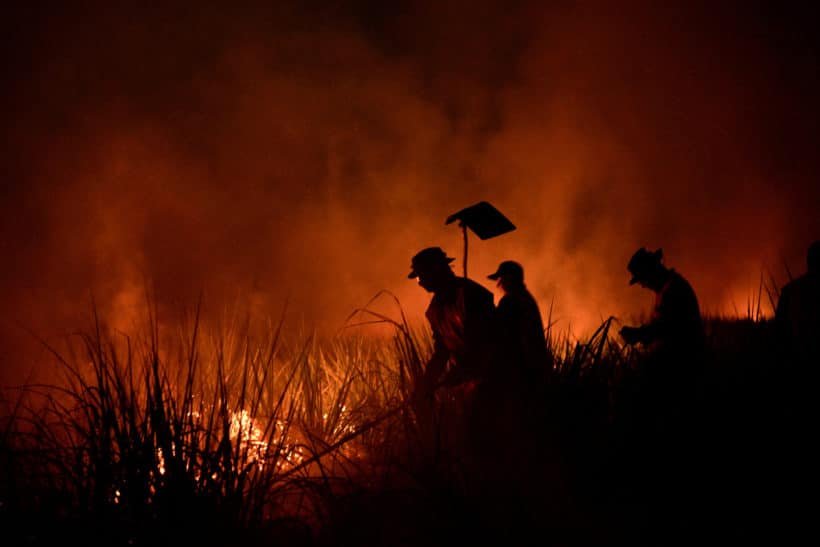
DUBAI, Dec 13 (Reuters) – How to adapt to the impacts of climate change was one of the many difficult questions addressed at the COP28 talks in Dubai – and how to pay for it has yet to be answered.
The final deal from the U.N. climate summit in Dubai on Wednesday was vague on where much-needed finance would come from – a topic picked up by a number of countries as they commented on the deal.
“Adaptation is really a life and death issue,” the Bangladesh climate envoy Saber Hossain Chowdhury said. “We cannot compromise on adaptation. We cannot compromise on lives and livelihoods.”
So finance should be “geared to delivering the resources that we need,” he said. “It’s absolutely fundamental.”
A source involved in the talks said a push for firmer action had been hampered by the need to agree a new overall climate finance target next year. The current $100 billion annual target – which had been missed in the past – expires in 2025.
Despite that, the source said delegates had increasingly acknowledged adaptation finance was not just about moving “chunks of money north to south”, but part of a wider discussion about what a country’s economy would look like in the future.
As a result, a requirement in the final deal for countries to deliver a national adaptation plan by 2030 – 51 countries have already done so – should, in theory, help the available money get to where it is needed most.
‘SIGNIFICANT START’
Despite concern around the lack of commitment to provide more money, Singapore’s environment minister said she was glad the topic had risen up the agenda.
“As a small island state we struggled with adaptation for many editions of COP,” said Grace Fu, so the inclusion of more focused language in the final deal text was “a very significant start for us”.
The sharper focus followed a landmark November U.N. report showing that developing nations would need up to 18 times more funding than they currently receive to build resilience into their economies to withstand the impacts of climate change.
The annual financing shortfall for adaptation was as much as $366 billion, compared with the $25 billion provided during the 2017-2021 period, the U.N. Environment Programme (UNEP) said.
David Nicholson, chief climate officer at humanitarian NGO Mercy Corps, called the report a “wake-up call”.
Yet money flows remain sluggish. The biggest news announced at COP28 was a commitment of $3 billion in new money from the United States to the Green Climate Fund, which aims to put at least half of its investment dollars into adaptation projects.
“At COP28, the international community made progress in righting the scales,” GCF chief Mafalda Duarte told Reuters, pointing to a total of $12.8 billion in new capital raised for the fund to support climate action across the developing world.
“It must mobilise global solidarity with those countries least prepared to safeguard communities from climate impacts.”
A U.N. Adaptation Fund, though, had only raised around half of the $300 million it had hoped to reach in 2023 by the end of the conference.
HURDLES
For many private investors, the hurdles include working out how to make a profit from projects, even though failure to finance adaptation could ultimately impact their other investments.
“Lenders are finding it challenging to see the returns that can be made in this sector. There are insufficient incentives for lenders at the moment,” John Shum, partner at law firm King & Wood Mallesons, said.
The areas where investors could do more include helping to bolster natural ecosystems in exchange for valuable carbon credits or building climate-resilient infrastructure. Others are also investing in bonds linked to protecting nature.
Regulators also need to force companies to disclose their exposure to the physical risks of climate change and to reward those taking action to reduce their exposure through better credit ratings and lower capital requirements, said Rowan Douglas, CEO, at Howden Climate Risk and Resilience.
“Without it, there is limited economic rationale or reward for investing in adaptation.”
For Yvonne Aki-Sawyerr, mayor of the Sierra Leone capital Freetown, among the most vulnerable cities in Africa as it faces floods and coastal erosion, adaptation and mitigation, such as greening energy supplies, needed to be considered together.
“Making too fine a distinction just makes for division. We’re at the point now where we should be addressing the climate crisis and the funding should be what it is.”
(Reporting by Simon Jessop, David Stanway, Kate Abnett; Editing by Katy Daigle and Barbara Lewis)

